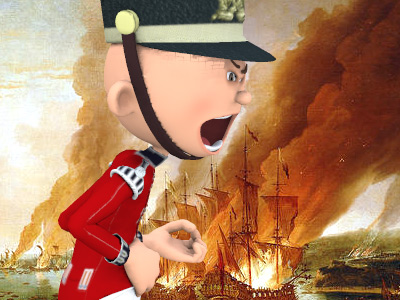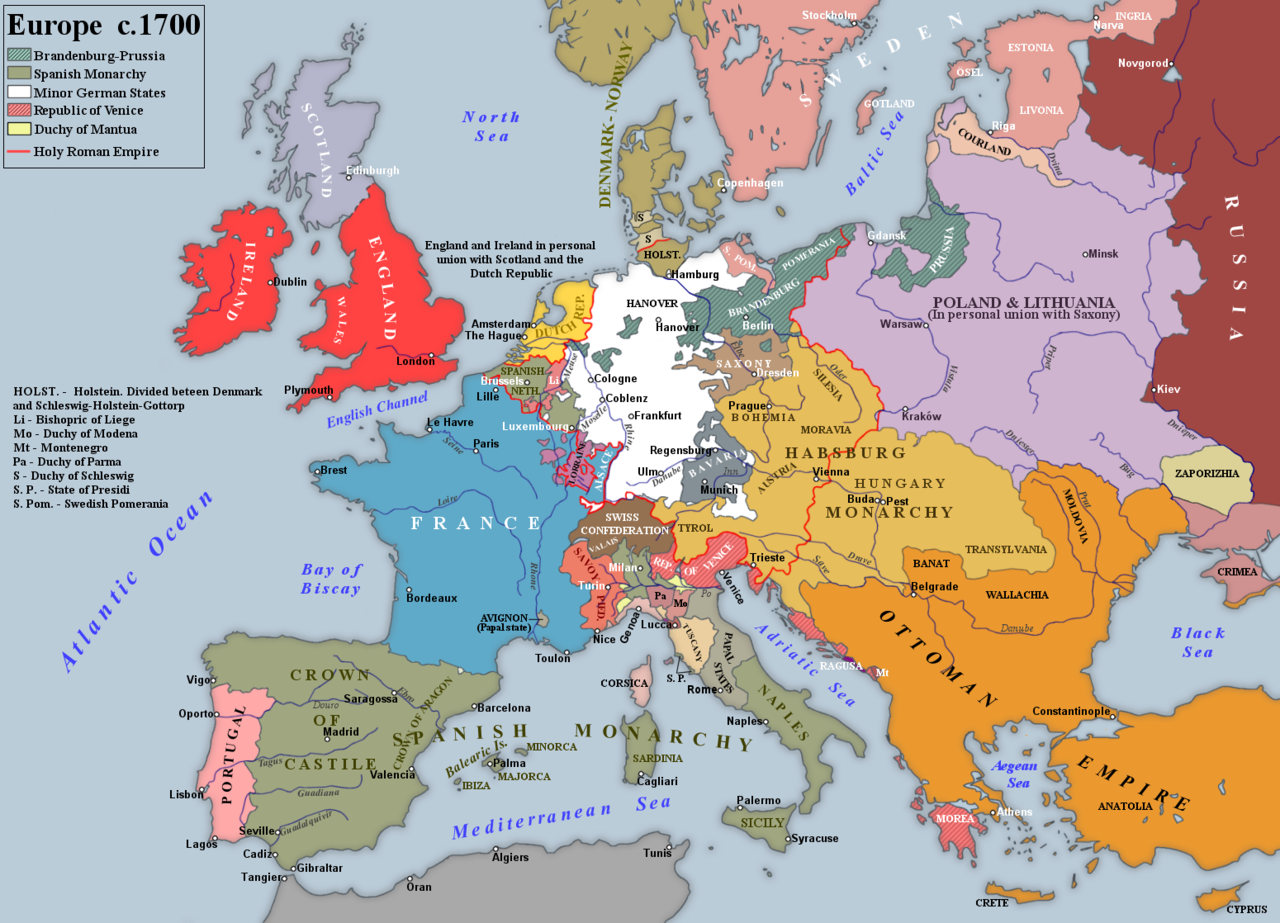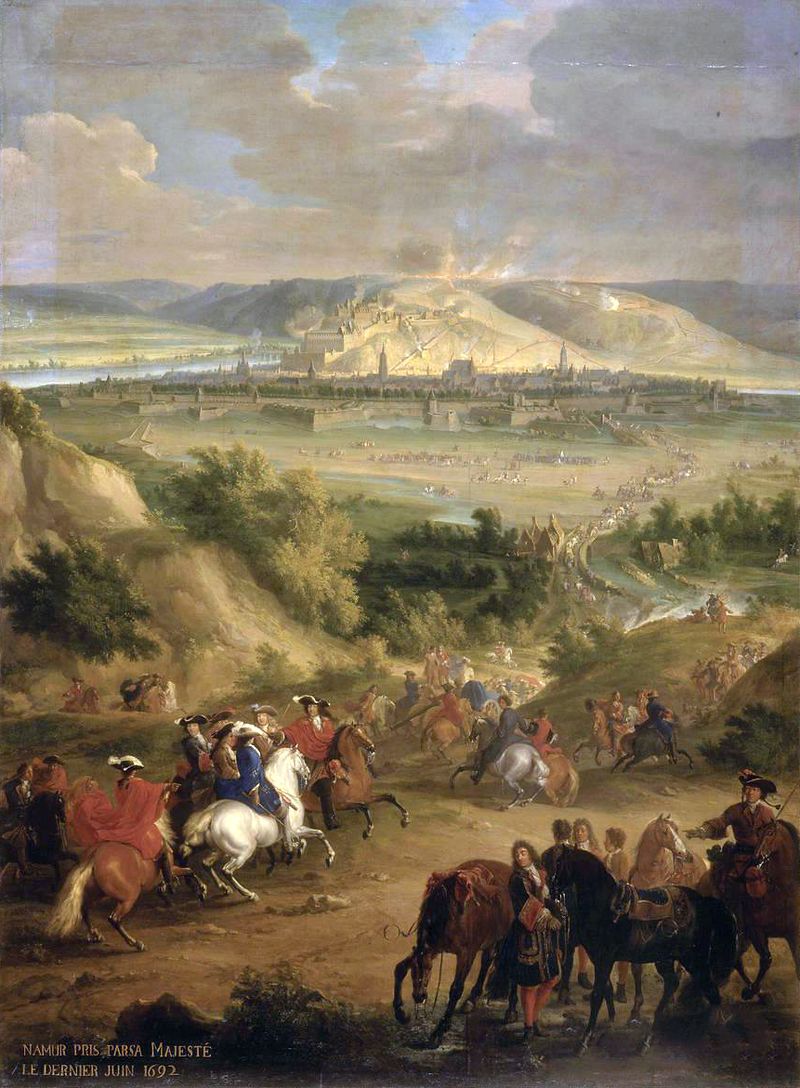Nine Years' War (1688–97)
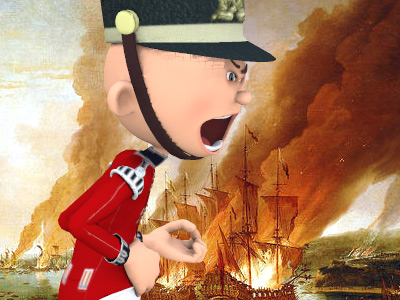
Heavy Fighting: 1692–93
After the sudden death of the influential Louvois in July 1691 Louis XIV had assumed a more active role in the direction of military policy, relying on advice from experts such as the Marquis of Chamlay and Vauban. Louvois' death also brought changes to state policy with the less adventurous Duke of Beauvilliers and the Marquis of Pomponne entering Louis XIV's government as ministers of state. From 1691 onwards Louis XIV and Pomponne pursued efforts to unglue the Grand Alliance, including secret talks with Emperor Leopold I and, from August, attempts of religious solidarity with Catholic Spain. The approaches made to Spain The Spanish Empire was a colonial empire governed by Spain and its predecessor states between 1492 and 1976. One of the largest empires in history, it was the first to usher the European Age of Discovery and achieve a global scale, controlling vast territory. It was one of the most powerful empires of the early modern period, reaching its maximum extent in the 18th century. came to naught (the Nine Years' War was not a religious war), but the Maritime Powers were also keen for peace. Talks were hampered, however, by Louis XIV's reluctance to cede his earlier gains (at least those made in the Reunions) and, in his deference to the principle of the divine right of kings, his unwillingness to recognise William III's claim to the English throne. For his part William III was intensely suspicious of Louis XIV and his supposed designs for universal monarchy.
The Spanish Empire was a colonial empire governed by Spain and its predecessor states between 1492 and 1976. One of the largest empires in history, it was the first to usher the European Age of Discovery and achieve a global scale, controlling vast territory. It was one of the most powerful empires of the early modern period, reaching its maximum extent in the 18th century. came to naught (the Nine Years' War was not a religious war), but the Maritime Powers were also keen for peace. Talks were hampered, however, by Louis XIV's reluctance to cede his earlier gains (at least those made in the Reunions) and, in his deference to the principle of the divine right of kings, his unwillingness to recognise William III's claim to the English throne. For his part William III was intensely suspicious of Louis XIV and his supposed designs for universal monarchy.
Over the winter of 1691–92 the French devised a grand plan to gain the ascendancy over their enemies – a design for the invasion of England The Kingdom of England was a sovereign state on the island of Great Britain from about 927, when it emerged from various Anglo-Saxon kingdoms, until 1 May 1707, when it united with Scotland to form the Kingdom of Great Britain. The Viking invasions of the 9th century upset the balance of power between the English kingdoms, and native Anglo-Saxon life in general. The English lands were unified in the 10th century in a reconquest completed by King Æthelstan in 927. in one more effort to support James II in his attempts to regain his kingdoms; and a simultaneous assault on Namur in the Spanish Netherlands. The French hoped that Namur's seizure might inspire the Dutch
The Kingdom of England was a sovereign state on the island of Great Britain from about 927, when it emerged from various Anglo-Saxon kingdoms, until 1 May 1707, when it united with Scotland to form the Kingdom of Great Britain. The Viking invasions of the 9th century upset the balance of power between the English kingdoms, and native Anglo-Saxon life in general. The English lands were unified in the 10th century in a reconquest completed by King Æthelstan in 927. in one more effort to support James II in his attempts to regain his kingdoms; and a simultaneous assault on Namur in the Spanish Netherlands. The French hoped that Namur's seizure might inspire the Dutch The Dutch Republic was a confederation that existed from 1579, during the Dutch Revolt, to 1795. It was a predecessor state of the Netherlands and the first fully independent Dutch nation state. Although the state was small and contained only around 1.5 million inhabitants, it controlled a worldwide network of seafaring trade routes. The income from this trade allowed the Dutch Republic to compete militarily against much larger countries. It amassed a huge fleet of 2,000 ships, initially larger than the fleets of England and France combined. to make peace, but if not, its capture would nevertheless be an important pawn at any future negotiations. With 60,000 men (protected by a similar force of observation under Luxembourg), Marshal Vauban invested the stronghold on 29 May. The town soon fell but the citadel – defended by van Coehoorn – held out until 30 June. Endeavouring to restore the situation in the Spanish Netherlands William III surprised Luxembourg's army near the village of Steenkirk on 3 August. The Allies enjoyed some initial success, but as French reinforcements came up William III's advance stalled. The Allies retired from the field in good order, and both sides claimed victory: the French because they repulsed the assault; the Allies because they had saved Liège from the same fate as Namur. However, due to the nature of late 17th century warfare the battle, like Fleurus before it, produced little of consequence.
The Dutch Republic was a confederation that existed from 1579, during the Dutch Revolt, to 1795. It was a predecessor state of the Netherlands and the first fully independent Dutch nation state. Although the state was small and contained only around 1.5 million inhabitants, it controlled a worldwide network of seafaring trade routes. The income from this trade allowed the Dutch Republic to compete militarily against much larger countries. It amassed a huge fleet of 2,000 ships, initially larger than the fleets of England and France combined. to make peace, but if not, its capture would nevertheless be an important pawn at any future negotiations. With 60,000 men (protected by a similar force of observation under Luxembourg), Marshal Vauban invested the stronghold on 29 May. The town soon fell but the citadel – defended by van Coehoorn – held out until 30 June. Endeavouring to restore the situation in the Spanish Netherlands William III surprised Luxembourg's army near the village of Steenkirk on 3 August. The Allies enjoyed some initial success, but as French reinforcements came up William III's advance stalled. The Allies retired from the field in good order, and both sides claimed victory: the French because they repulsed the assault; the Allies because they had saved Liège from the same fate as Namur. However, due to the nature of late 17th century warfare the battle, like Fleurus before it, produced little of consequence.
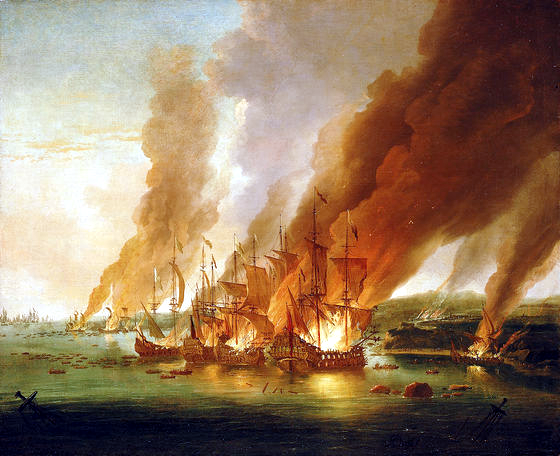
Battle of La Hogue, (1692) by Adriaen van Diest. The last act of the battle – French ships set on fire at La Hogue
While French arms had proved successful at Namur the proposed descent on England was a failure. James II believed that there would be considerable support for his cause once he had established himself on English soil, but a series of delays and conflicting orders ensured a very uneven naval contest in the English Channel. The engagement was fought at the tip of the Cherbourg peninsula, and lasted six days. At the action off Cape Barfleur on 29 May, the French fleet of 44 rated vessels under Admiral Tourville put up stern resistance against Admirals Rooke's and Russell's 82 rated English and Dutch vessels. Nevertheless, the French were forced to disengage: some escaped, but the 15 ships that had sought safety in Cherbourg and La Hogue were destroyed by English seamen and fireships on 2–3 June. With the Allies now dominant in the English Channel James II's invasion was abandoned. Yet the battle itself was not the death-blow for the French navy: the subsequent mismanagement and underfunding of the fleet under Pontchartrain, coupled with Louis XIV's own personal lack of interest, were central to the French losing naval superiority over the English and Dutch during the Nine Years' War.
Meanwhile, in southern Europe the Duke of Savoy with 29,000 men (substantially exceeding Catinat's number who had sent some troops to the Netherlands) invaded Dauphiné via the mountain trails shown to them by the Vaudois. The Allies invested Embrun, which capitulated on 15 August, before sacking the deserted town of Gap. However, with their commander falling ill with smallpox, and concluding that holding Embrun was untenable, the Allies abandoned Dauphiné in mid-September, leaving behind seventy villages and châteaux burned and pillaged. The attack on Dauphiné had required Noailles give up troops to bolster Catinat, condemning him to a passive campaign in Catalonia; but on the Rhine the French gained the upper hand. De Lorge devoted much of his effort imposing contributions on German lands, spreading terror far and wide in Swabia and Franconia. In October the French commander relieved the siege of Ebernburg on the left bank of the Rhine before returning to winter quarters.
By 1693 the French army had reached an official size of over 400,000 men (on paper), but Louis XIV was facing an economic crisis. France The Kingdom of France is the historiographical name or umbrella term given to various political entities of France in the medieval and early modern period. It was one of the most powerful states in Europe since the High Middle Ages. It was also an early colonial power, with possessions around the world. Colonial conflicts with Great Britain led to the loss of much of its North American holdings by 1763. The Kingdom of France adopted a written constitution in 1791, but the Kingdom was abolished a year later and replaced with the First French Republic. and northern Italy witnessed severe harvest failures resulting in widespread famine which, by the end of 1694, had accounted for the deaths of an estimated two million people. Nevertheless, as a prelude to offering generous peace terms before the Grand Alliance Louis XIV planned to go over to the offensive: Luxembourg would campaign in Flanders, Catinat in northern Italy, and in Germany, where Louis XIV had hoped for a war-winning advantage, Marshal de Lorge would attack Heidelberg. In the event, Heidelberg fell on 22 May before Luxembourg's army took to the field in the Netherlands, but the new Imperial commander on the Rhine, Prince Louis of Baden, provided a strong defence and prevented further French gains. Luxembourg had better luck in the Low Countries, however. After taking Huy on 23 July, the French commander outmanoeuvred William III, catching him off-guard between the villages of Neerwinden and Landen. The ensuing engagement on 29 July was a close and costly encounter but French forces, whose cavalry once again showed their superiority, prevailed. Luxembourg and Vauban proceeded to take Charleroi on 10 October which, together with the earlier prizes of Mons, Namur and Huy, provided the French with a new and impressive forward line of defence.
The Kingdom of France is the historiographical name or umbrella term given to various political entities of France in the medieval and early modern period. It was one of the most powerful states in Europe since the High Middle Ages. It was also an early colonial power, with possessions around the world. Colonial conflicts with Great Britain led to the loss of much of its North American holdings by 1763. The Kingdom of France adopted a written constitution in 1791, but the Kingdom was abolished a year later and replaced with the First French Republic. and northern Italy witnessed severe harvest failures resulting in widespread famine which, by the end of 1694, had accounted for the deaths of an estimated two million people. Nevertheless, as a prelude to offering generous peace terms before the Grand Alliance Louis XIV planned to go over to the offensive: Luxembourg would campaign in Flanders, Catinat in northern Italy, and in Germany, where Louis XIV had hoped for a war-winning advantage, Marshal de Lorge would attack Heidelberg. In the event, Heidelberg fell on 22 May before Luxembourg's army took to the field in the Netherlands, but the new Imperial commander on the Rhine, Prince Louis of Baden, provided a strong defence and prevented further French gains. Luxembourg had better luck in the Low Countries, however. After taking Huy on 23 July, the French commander outmanoeuvred William III, catching him off-guard between the villages of Neerwinden and Landen. The ensuing engagement on 29 July was a close and costly encounter but French forces, whose cavalry once again showed their superiority, prevailed. Luxembourg and Vauban proceeded to take Charleroi on 10 October which, together with the earlier prizes of Mons, Namur and Huy, provided the French with a new and impressive forward line of defence.
In northern Italy, meanwhile, Catinat marched on Rivoli (with reinforcements from the Rhine and Catalan fronts), forcing the Duke of Savoy to abandon the siege and bombardment of Pinerolo (25 September – 1 October) before withdrawing to protect his rear. The resultant Battle of Marsaglia on 4 October 1693 ended in a resounding French victory. Turin now lay open to attack but further manpower and supply difficulties prevented Catinat from exploiting his gain, and all the French could get out of their victory was renewed breathing-space to restock what was left of Pinerolo. Elsewhere, Noailles secured the valuable sea port of Rosas in Catalonia on 9 June before withdrawing into Roussillon. When his opponent, Medina-Sidonia, abandoned plans to besiege Bellver, both sides entered winter quarters. Meanwhile, the French navy achieved victory in its final fleet action of the war. On 27 June Tourville's combined Brest and Toulon squadrons ambushed the Smyrna convoy (a fleet of between 200–400 Allied merchant vessels travelling under escort to the Mediterranean) as it rounded Cape St. Vincent. The Allies lost approximately 90 merchantmen with a value of some 30 million livres.
HISTORY
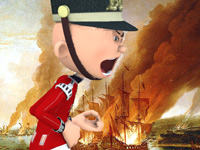
RESOURCES
This article uses material from the Wikipedia article "Nine Years' War", which is released under the Creative Commons Attribution-Share-Alike License 3.0.
© Stories Preschool. All Rights Reserved.
